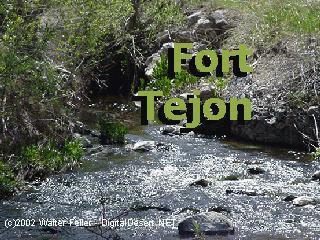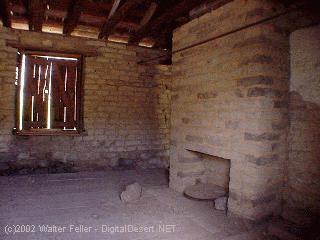History of Fort Tejon
At the top of Grapevine Canyon, the adobe buildings of Fort Tejon State Historic Park guard a beautiful tree-lined meadow. Between 1854 and 1864, this U.S. Army fort protected people in the surrounding region from the social and cultural conflicts between American settlers and California Indians.
Early History
Prior to the establishment of Fort Tejon, the Emigdiano Indians called this area home. An inland group of the coastal Chumash people, the Emigdiano lived in a large village at the bottom of Grapevine Canyon and had one village, Sausu, along Castaic Lake. Unlike the coastal groups, they had little contact with European explorers and settlers before the mid-1800s.Founding of a Fort
The gold discovery drew thousands of people to California in the 1850s, bringing about confrontations between the Indians, miners and the landhungry settlers. The U.S. government tried to mitigate the situation by establishing reservations, including, in 1853, the Sebastian Indian Reservation at the southern end of the San Joaquin Valley.In July 1854 Lieutenant Alfred Latimer and a small detachment of dragoons established a camp at the reservation. However, the new camp lacked water, forage for horses, and timber for construction. That August Major J.L. Donaldson, the Quartermaster, moved the post to the top of Grapevine Canyon, 17 miles southwest of the reservation. This site contained everything necessary to sustain a large military outpost.
The First U.S. Dragoons arrived on August 10, 1854, and began construction of more than 40 military buildings. A small civilian community developed just south of the fort to provide supplies and labor to the military. In 1858 the Overland Mail Company established a station in the sutler’s (trader’s) store at the fort.
The Camel Experiment
During the late 1850s, the U.S. Army experimented with camels, hoping to improve transport across the arid west, and some of them were brought to Fort Tejon in 1859 where the Army took charge of them. However, because the animals were in poor condition and expensive to feed, the camel herd was transferred after less than a year to the Los Angeles Quartermaster Depot. There they were used in a failed experiment to cut the expense of messenger service between Los Angeles and Fort Mojave. The animals were then moved to the Benicia Army Arsenal and eventually sold at auction.The Closure of Fort Tejon
For almost ten years, Fort Tejon provided a source of employment, protection, and social activities for local residents. The foremost duties of the Dragoons stationed here were to protect and control the Indians living on the Sebastian Indian Reservation, and to deter raids by the Paiutes, Chemeheuvi, Mojave and other desert Indian groups. The Dragoons’ wide-ranging patrols covered most of central and southern California and sometimes extended as far as Utah.With the outbreak of the Civil War in 1861, the Dragoons were sent to guard Los Angeles and later transferred east to fight in the war. In the summer of 1862, violence erupted between the encroaching white settlers and the Owens Valley Paiute, who wanted to protect their lands. Three cavalry companies of California Volunteers forcibly moved the Paiute to the Sebastian Indian Reservation, but the authorities there refused to accept responsibility for them. In 1863 several hundred of these Indians were brought to Fort Tejon, which was then being used by the California Volunteers. With little or no food, clothing, or other support, the Indians’ ranks were thinned by disease, starvation, and desertion until the summer of 1864 when they were transferred to the Tule River Indian Reservation. That year the U.S. Army closed Fort Tejon, formally ending its career as an active military post.
Tejon Ranch
Even prior to the closure of Fort Tejon, Edward F. Beale began purchasing land in the area. In 1866 he acquired the former lands of the Sebastian Indian Reservation and the Castac Rancho land grant upon which the fort sat. The fort’s old adobe buildings were then being used as stables, storehouses and residences for ranch workers.Fort Tejon Today
In 1940, through the persuasive efforts of Kern County citizens, the Tejon Ranch Company deeded five acres—the old parade ground, the foundations, and remnants of the original adobe buildings—to the State of California as a state park. Restoration began on the adobe buildings in 1947 and continues to this day.The original barracks building, the reconstructed officers’ quarters and various other structures stand as reminders of Fort Tejon’s military history.
source- State of California Parks

The Camel Expedition
The Secretary of War, Jefferson Davis, wanted to test the use of camels as desert transportation for military equipment and supplies vs. horses and mules. He assisted in acquiring ...

